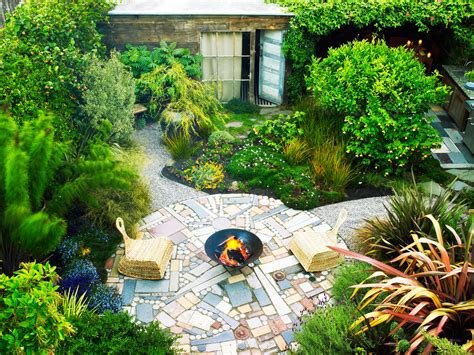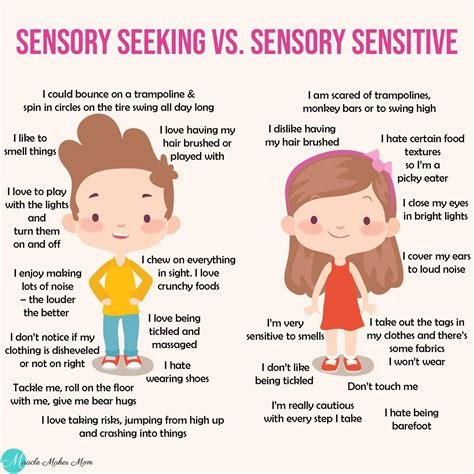Creating a Sustainable and Stylish Garden Design
Are you looking to create a garden that not only looks stunning but also contributes to the health of the planet? In this blog post, we will explore the principles of sustainable garden design and how you can incorporate them into your own outdoor space. From selecting native plants and implementing water-saving techniques to creating habitats for local wildlife and using recycled materials, there are numerous ways to make your garden more eco-friendly. We will also discuss organic gardening practices, building a compost system, designing a rainwater harvesting system, and creating a pollinator-friendly garden to support biodiversity. Additionally, we will explore the use of eco-friendly materials in hardscaping and structures to minimize the environmental impact of your garden design. Whether you’re a seasoned gardener or just starting out, this post will provide you with the knowledge and inspiration to create a sustainable and stylish garden that benefits both you and the environment.
Understanding sustainable garden design principles
Creating a sustainable garden involves understanding and implementing environmentally friendly design principles that promote long-term ecological balance. These principles include using native plants, conserving water, supporting local wildlife, and incorporating recycled materials.
One of the key sustainable garden design principles is choosing native plants that are well-suited to the local climate and soil conditions. By selecting plants that are adapted to the area, gardeners can reduce the need for excessive water, fertilizers, and pesticides.
Implementing water-saving techniques in a sustainable garden is essential for conserving this precious resource. Methods such as drip irrigation, rainwater harvesting, and using drought-tolerant plants can significantly reduce water usage and promote a more sustainable garden ecosystem.
Another important principle is creating habitats for local wildlife in the garden. This can be achieved by providing food, shelter, and water sources for birds, insects, and other animals, thereby supporting biodiversity and ecological balance.
Selecting native plants for a sustainable garden
When it comes to creating a sustainable garden, one of the most important factors to consider is selecting native plants. Native plants are those that naturally occur in a specific region, and they have adapted to the local climate, soil, and pests over time. By incorporating native plants into your garden, you can minimize the need for water, pesticides, and fertilizer, as they are already well-suited to the environment.
Furthermore, native plants provide essential habitats and food sources for local wildlife, such as birds, butterflies, and bees. This contributes to the overall biodiversity of the ecosystem and helps to support the balance of local ecosystems. In addition, by selecting native plants, you can help to preserve the natural heritage and character of your region.
Before choosing native plants for your garden, it’s important to research which species are native to your specific area. Consider factors such as sunlight, soil type, and water requirements, as well as the potential for pests or diseases.
Ultimately, selecting native plants for a sustainable garden is not only beneficial for the environment, but it can also provide a beautiful and low-maintenance landscape for you to enjoy.
Implementing water-saving techniques in your garden
Implementing water-saving techniques in your garden is not only beneficial for the environment but also for your wallet. By using smart irrigation systems, collecting rainwater, and making simple changes to your landscaping, you can significantly reduce your water usage.
One of the most effective water-saving techniques is to install a drip irrigation system. Unlike traditional sprinklers, drip systems deliver water directly to the root zone of plants, minimizing evaporation and runoff. This ensures that your plants receive the necessary moisture without wasting water.
Another way to save water in your garden is by collecting rainwater. By installing rain barrels or a larger rainwater harvesting system, you can capture runoff from your roof and use it to irrigate your garden. This not only conserves water but also reduces your reliance on municipal water sources.
In addition to these water-saving methods, making simple changes to your landscaping can also help reduce water usage. Choosing drought-tolerant plants, using mulch to retain moisture, and grouping plants with similar water needs together are all effective strategies for conserving water in the garden.
Creating habitats for local wildlife in your garden
Creating a garden that supports local wildlife is not only beneficial for the environment but also adds a beautiful and dynamic element to your outdoor space. By incorporating habitat-friendly features, you can attract various species of birds, insects, and small mammals to your garden, creating a thriving ecosystem right in your backyard.
One way to create habitats for local wildlife is by incorporating native plants into your garden. Native plants provide natural food sources and nesting sites for a variety of animals, including butterflies, bees, and birds. By choosing plants that are native to your region, you can ensure that the wildlife in your area will be supported and encouraged to visit your garden.
Another important aspect of creating habitats for local wildlife is providing shelter and protection. This can be achieved through the use of dense shrubs and trees, as well as the inclusion of birdhouses, bat boxes, and insect hotels. These features offer safe havens for wildlife to rest, nest, and seek refuge from predators, ultimately making your garden a more attractive and inviting place for local wildlife.
Additionally, incorporating a water source into your garden can greatly contribute to creating habitats for local wildlife. Whether it’s a small pond, a birdbath, or a shallow dish of water, providing access to clean and fresh water can attract a diverse range of species, from birds and butterflies to frogs and insects. Water is essential for wildlife survival, making it an important element in any wildlife-friendly garden.
Integrating recycled materials into your garden design
Integrating recycled materials into your garden design not only adds a unique and artistic touch to your outdoor space, but also helps reduce waste and promote environmental sustainability. There are countless ways to incorporate recycled materials into your garden, from using old tires as planters to repurposing broken tiles as mosaic pathways. By thinking creatively and looking at items with a fresh perspective, you can transform discarded materials into functional and visually appealing elements for your garden.
One popular way to integrate recycled materials into your garden design is by using reclaimed wood. Old wooden pallets can be upcycled into vertical gardens, while weathered boards can be repurposed as raised beds or border edging. Not only does this give new life to the wood, but it also adds a rustic and charming aesthetic to your garden.
Another creative idea for incorporating recycled materials is to use discarded glass bottles. By burying them halfway into the ground, you can create a unique and eye-catching border for flower beds or pathways. The colored glass adds a pop of color to the garden, while also diverting glass from the landfill.
Furthermore, integrating recycled materials into your garden design can be as simple as using old metal cans as planters or incorporating salvaged bricks into retaining walls or garden borders. The possibilities are endless, and by reusing materials in this way, you are reducing the demand for new resources and minimizing your environmental footprint.
Using organic gardening practices for a sustainable garden
Organic gardening is a sustainable approach to growing plants and vegetables without the use of synthetic fertilizers, pesticides, or herbicides. By avoiding the use of harmful chemicals, organic gardening practices promote healthy soil and ecosystems, leading to long-term sustainability.
One of the key principles of organic gardening is to focus on building healthy soil. This can be achieved through the use of compost, mulch, and cover crops, which improve soil fertility and structure. By nurturing the soil, organic gardeners create a strong foundation for growing plants and supporting beneficial microorganisms.
Another important aspect of organic gardening is the use of natural pest control methods. Instead of relying on chemical pesticides, organic gardeners can introduce beneficial insects, such as ladybugs and lacewings, to help manage pest populations. Additionally, companion planting and crop rotation can deter pests and promote a balanced ecosystem.
Ultimately, organic gardening practices contribute to the overall health of the environment by minimizing the use of synthetic inputs and promoting biodiversity. By utilizing organic gardening methods, gardeners can create sustainable landscapes that support both plants and wildlife.
Building a compost system for nutrient-rich soil
Implementing a compost system in your garden is a fantastic way to create nutrient-rich soil for your plants. By composting, you can recycle organic waste such as food scraps, yard clippings, and leaves, turning them into a valuable resource for your garden. Building a compost system is a relatively simple process and can be done using a variety of materials. From simple DIY compost bins to more elaborate compost tumblers, there are many options to choose from.
One of the key components of a successful compost system is a good mix of green and brown materials. Green materials such as fruit and vegetable scraps, coffee grounds, and grass clippings provide nitrogen, while brown materials like dry leaves, straw, and wood chips provide carbon. Balancing these materials will help you achieve the right conditions for decomposition and create high-quality compost.
It’s important to regularly turn and aerate your compost pile to promote the breakdown of organic matter. This allows oxygen to reach the microorganisms responsible for decomposition and prevents the pile from becoming anaerobic, which can lead to unpleasant odors. By maintaining a well-aerated compost pile, you can produce compost more quickly and efficiently.
Once your compost is finished, you can use it to enrich your garden soil and provide essential nutrients for your plants. Whether you’re growing flowers, vegetables, or herbs, nutrient-rich compost can help improve soil structure, retain moisture, and support healthy root development. By building a compost system for your garden, you can contribute to a more sustainable and eco-friendly approach to gardening.
Designing a rainwater harvesting system for irrigation
When it comes to designing a rainwater harvesting system for irrigation, there are a few key principles to keep in mind. First and foremost, it’s important to consider the size and layout of your garden, as well as the climate and rainfall patterns in your area. This will help you determine the amount of water you’ll need to collect and store, as well as the best location for your harvesting system.
Next, you’ll want to consider the different ways in which you can capture rainwater. This might include using gutters and downspouts to direct water from your roof into a storage tank, or installing a permeable pavement system to capture runoff from your driveway or walkways. By maximizing the amount of water you’re able to collect, you can ensure that your garden has a reliable source of irrigation throughout the year.
Once you’ve collected the rainwater, it’s important to have a plan for storing and distributing it. This might involve using a simple barrel or cistern to collect water, or a more complex system of tanks and pumps to distribute it throughout your garden. You’ll also want to consider using a filtration system to remove any debris or contaminants from the water, ensuring that it’s safe for use on your plants.
Finally, it’s important to consider the environmental impact of your rainwater harvesting system. By designing a system that minimizes disruption to local ecosystems and uses eco-friendly materials, you can ensure that your garden remains a sustainable and harmonious part of the natural world.
Creating a pollinator-friendly garden to support biodiversity
Creating a pollinator-friendly garden is crucial for maintaining and enhancing biodiversity in our local ecosystems. By designing a garden that attracts and supports pollinators such as bees, butterflies, and birds, we can play a vital role in ensuring the health and sustainability of our environment.
One of the key aspects of creating a pollinator-friendly garden is selecting the right plants that provide nectar and pollen for pollinators. Native plants are particularly well-suited for this purpose, as they have co-evolved with local pollinators and provide the ideal food sources. By incorporating a variety of flowering plants that bloom at different times of the year, we can ensure a consistent food supply for pollinators throughout the seasons.
In addition to plant selection, it is important to provide nesting and habitat for pollinators in the garden. This can involve leaving patches of bare ground for ground-nesting bees, constructing bee hotels for solitary bees, and including shrubs and trees for nesting sites and shelter. By creating diverse and naturalistic habitats, we can encourage a wide range of pollinators to make our garden their home.
Lastly, it is essential to minimize the use of pesticides in a pollinator-friendly garden. Pesticides can be harmful to pollinators and can disrupt the delicate balance of our garden ecosystem. Instead, we can use organic gardening practices such as companion planting, crop rotation, and natural pest control methods to maintain a healthy and thriving garden without the need for harmful chemicals.
Using eco-friendly materials in hardscaping and structures
When designing a sustainable garden, it’s important to consider the materials used in hardscaping and structures. Eco-friendly materials are those that have minimal impact on the environment and are often sourced from renewable or recycled sources. By using eco-friendly materials, gardeners can reduce their carbon footprint and contribute to a healthier planet.
One popular eco-friendly material for hardscaping is permeable pavers, which allow rainwater to seep through the surface and recharge the groundwater. These pavers help to prevent erosion and reduce stormwater runoff, ultimately improving water quality and reducing the strain on municipal infrastructure. Another option for eco-friendly hardscaping is recycled composite decking, which is made from a blend of recycled wood fibers and plastic. This material is durable and low-maintenance, making it a sustainable choice for outdoor structures.
For garden structures such as pergolas and fences, reclaimed wood is an excellent eco-friendly option. Reclaimed wood is salvaged from old buildings, barns, or other structures, diverting it from the waste stream and giving it a new purpose. Using reclaimed wood adds a unique, rustic charm to the garden while reducing the demand for new timber, which helps to conserve forests and natural habitats.
By incorporating eco-friendly materials into hardscaping and structures, gardeners can create beautiful, functional spaces that align with their commitment to sustainability. Whether it’s choosing permeable pavers to reduce water runoff or opting for reclaimed wood to give new life to old materials, every decision made in the design process can have a positive impact on the environment.
Frequently Asked Questions
What are the principles of sustainable garden design?
Sustainable garden design principles include using native plants, implementing water-saving techniques, creating habitats for local wildlife, integrating recycled materials, and using organic gardening practices.
How can I select native plants for a sustainable garden?
Selecting native plants for a sustainable garden involves choosing species that are adapted to the local environment, require minimal water and maintenance, and provide food and habitat for local wildlife.
What are some water-saving techniques I can implement in my garden?
Water-saving techniques for a sustainable garden include mulching, drip irrigation, capturing and storing rainwater, and selecting drought-tolerant plants.
How can I create habitats for local wildlife in my garden?
Creating habitats for local wildlife in your garden can be done by incorporating native plants, providing water sources, and creating shelter such as nesting boxes and rock piles.
How can I integrate recycled materials into my garden design?
Recycled materials can be integrated into garden design by using reclaimed wood for structures, repurposing containers for planting, and incorporating salvaged materials into hardscaping and art installations.
What are some organic gardening practices for a sustainable garden?
Organic gardening practices for a sustainable garden include using compost and natural fertilizers, practicing crop rotation, and avoiding chemical pesticides and herbicides.
How can I build a compost system for nutrient-rich soil?
You can build a compost system using a bin or pile to decompose organic materials such as kitchen scraps, yard waste, and leaves, creating nutrient-rich compost for your garden soil.
How can I design a rainwater harvesting system for irrigation?
Designing a rainwater harvesting system involves capturing and storing rainwater from your roof or other surfaces in a cistern or barrel, and using it for irrigation in your garden.
How can I create a pollinator-friendly garden to support biodiversity?
Creating a pollinator-friendly garden involves planting a variety of flowers, providing nesting sites, avoiding pesticide use, and supporting a diverse range of pollinators such as bees, butterflies, and birds.
How can I use eco-friendly materials in hardscaping and structures?
Using eco-friendly materials in hardscaping and structures can be done by choosing sustainable wood, recycled metal, and natural stone, and considering the environmental impact of materials and construction methods.






